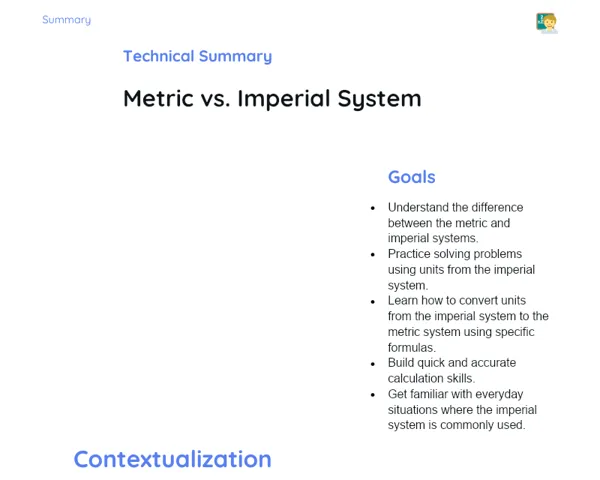Objectives
1. 🌟 Master the conversion of numbers to scientific notation, understanding its importance in various scientific and practical scenarios.
2. 🔍 Develop skills to perform basic mathematical operations (addition, subtraction, multiplication, and division) with numbers in scientific notation.
3. 🚀 Explore and solve practical and theoretical problems concerning extremely large or small numbers, using scientific notation to simplify understanding and calculations.
Contextualization
Did you know that scientific notation isn't just for mathematicians and scientists but is also crucial for astronauts, engineers, and even musicians? 🎼🚀 For example, at ISRO, when figuring out distances in space, scientific notation is indispensable for dealing with numbers that go beyond our everyday comprehension. This shows just how vital scientific notation is across various fields and how it makes calculations easier, whether we're discussing interstellar distances or the size of particles.
Important Topics
Conversion to Scientific Notation
Scientific notation allows us to express numbers as a product of two factors: a decimal between 1 and 10, and a power of 10. This method lets us represent very large or small numbers in a more practical and concise format. For instance, 300,000,000 can be simplified to 3 x 10^8 in scientific notation. This skill is essential for scientists, engineers, and in many practical situations where accuracy and clarity are crucial.
-
Identifying the exponent: The exponent shows how many times to multiply the decimal by 10 to retrieve the original value.
-
Application in real-world problems: Used in physics to express distances in space or in chemistry for molecular sizes.
-
Facilitates calculations: Eases the execution of mathematical operations with numbers of drastically different scales.
Operations in Scientific Notation
When working with scientific notation, we apply the rules of exponents and accurately convert results to the correct scientific notation format. For addition and subtraction, we need the exponents to match; for multiplication and division, we manipulate the exponents according to algebraic principles. Mastering this skill is key to tackling complex problems accurately in scientific and technological settings.
-
Rules for addition and subtraction: The exponents should be the same when adding or subtracting numerical values, keeping the exponent constant.
-
Rules for multiplication and division: To multiply, multiply the numbers and add the exponents. To divide, divide the numbers and subtract the exponents.
-
Practical application: Vital in calculations for physics, chemistry, engineering, and astronomy, where accuracy is indispensable.
Applications of Scientific Notation
Scientific notation finds extensive application across scientific research, industry, and daily life. It allows for a concise and clear expression of numbers across varying orders of magnitude, aiding calculations and comparisons. From discussing the size of the universe to measuring subatomic particles, scientific notation is a flexible and essential asset.
-
Scientific communication: Enhances information exchange among scientists and specialists in diverse fields.
-
Technology: Crucial in computer programming, circuit design, and other technological applications.
-
Education: Aids students in grappling with large and small numbers in an intuitive and effective manner.
Key Terms
-
Scientific Notation: A method of writing numbers as the product of a number between 1 and 10 and a power of 10, facilitating understanding of very large or small figures.
-
Exponent: The number indicating how many times we need to multiply 10 by the decimal number to return to the original value.
-
Magnitude: Refers to the scale of a number, often concerning its relative size compared to others.
For Reflection
-
Why is it essential for scientists to employ scientific notation when handling large datasets or extreme measurements?
-
How can converting numbers to scientific notation find application in your everyday life, beyond the classroom?
-
In what ways can grasping and practicing scientific notation enhance your skills in other subjects like science or technology?
Important Conclusions
-
We've delved into the fascinating world of Scientific Notation and discovered its vital role in mathematics as well as in fields like physics, chemistry, engineering, and daily life.
-
We learned how to convert numbers to scientific notation, carry out mathematical operations, and discussed various real-world applications that highlight the significance of this notation when handling extremely large or small numbers.
-
We acknowledged the real-world relevance of scientific notation, such as its use by ISRO for calculating distances in space, demonstrating how this knowledge impacts our lives and drives scientific advancement.
To Exercise Knowledge
- Cosmic Distances Challenge: Pick three celestial bodies (like planets, stars, or asteroids) and measure the distances between them in meters. Convert these distances to scientific notation and compare their magnitudes. 2. Chemical Simulation: Pretend you're a chemist needing to find out how many atoms are in one gram of gold. Use its atomic mass and molar mass to convert and compute the total number of atoms. 3. Interstellar Journey: Plan a hypothetical space trip! Given light speed and the distance from Earth to the nearest star, calculate the travel time, converting your findings into scientific notation.
Challenge
🚀 Scientific Notation Mission: Create a logbook as an astronaut exploring new planets. Document distances, travel times, and any numerical data you gather, converting everything to scientific notation. Share your logbook with the class to see who can manage the extreme numbers the best!
Study Tips
-
Use educational apps or interactive websites offering practice with scientific notation to consolidate classroom learning.
-
Create flashcards featuring different numbers in scientific notation and practice combining and converting these to reinforce your understanding.
-
Challenge yourself to spot instances of scientific notation in scientific articles, films, or news stories and rewrite the figures in scientific notation to check your comprehension.



